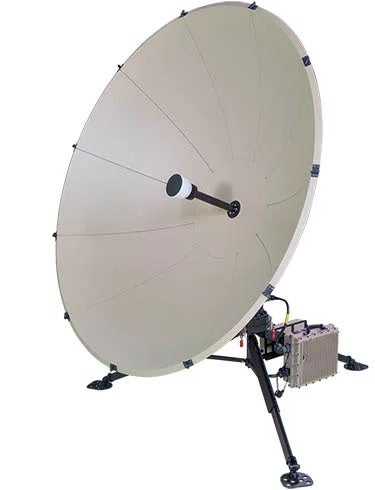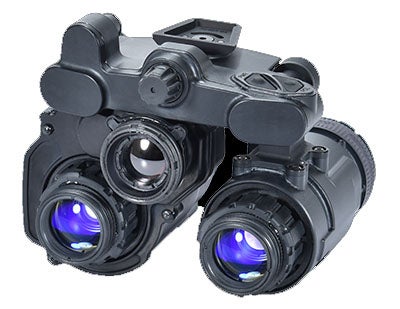Erupting conflict that broke out in Eastern Europe in early 2022 captivated global attention and demonstrated a direct connection between mission success and the ability to assure resilient communications across the battlespace.
While the size of – and technology investments made by – the Russian forces were overwhelming compared to the indigenous Ukrainian national defense, intelligence has suggested that Russian communications infrastructure was poor from the inception of the attacks in February. According to a report published in March by the Royal United Services Institute, this led to "makeshift solutions" including unencrypted high-frequency radio and mobile phones to relay information and battle orders.
Lessons learned from this year's military operations renewed efforts throughout the world to bolster both sovereign communications network and defensive electronic warfare infrastructures. A pronounced message has been received by military decision makers: the next conflict will require resilient interoperability across domains, services and coalition forces.
“If we’re looking to see how a modern battlefield is impacted by EW and cyber warfare, we need to look no further than what is going on right now” in Eastern Europe, Lt. Gen. Maria Gervais, deputy commanding general at U.S. Army Training and Doctrine Command, said, according to Defense News. “Everything that we are seeing in Ukraine has implications for a unified network, and almost certainly represents the type of threats we will see.”
This reality comes as no surprise to L3Harris Technologies, which has been providing a portfolio of advanced solutions into Ukraine and other countries to enable coalition force cooperation across land, air, sea and space.
The company further partners with in-country companies of its customers to establish integration services, support, infrastructure and sovereign capabilities for larger systems, Faisal Munir, L3Harris vice president of International Business Development, added.
ENABLING INTEROPERABILITY

Unique situations such as the Ukraine conflict require the deployment of tailored solutions. L3Harris’ end-to-end systems integration capability is best displayed in solutions such as the Converged Networking Gateway. These Command, Control, Computers, Communications and Cyber Intelligence, Surveillance and Reconnaissance (C5ISR) shelters combine tactical area communications systems, radio transceivers, Satellite Communications (SATCOM) Very Small Aperture Terminals (VSAT) and tactical radios into a robust, secure network. The networks are configured with industry-standard or flexible networking kits for specific mission sets, including border security, aerial surveillance and communications network extensions.
For land troops, both stationed and mobile, L3Harris’ battle-proven line of tactical radios deliver complete solutions for proper Primary, Alternate, Contingency and Emergency (PACE) plans, from small form factor, single- and multi-channel radios to answer every mission challenge.
A complementary and industry-leading waveform portfolio ensures coalition and legacy interoperability and resilient communications in contested environments.
“I like to refer to this as ‘graceful degradation,’” Munir said. “No matter how difficult the environment becomes, forces can always communicate.”
The company’s latest solution, Wraith™, is a first-of-its-kind frequency-hopping Mobile Ad Hoc Network (MANET) waveform for wideband voice and data with advanced, multi-layer anti-jam capabilities to support multi-domain interoperability.
Wraith provides connectivity for ground-to-ground, ground-to-air, air-to-air, Beyond Line of Sight and other applications. The self-forming, self-managing Wraith network provides wireless high-capacity data connectivity to users, enabling real-time applications, such as video surveillance, target and ground reporting and command and control for information superiority.
L3Harris’ Tactical Network ROVER® handheld transceivers support both analog and digital links with a bidirectional datalink capability for dismounted ground troops. ROVER transceivers provide real-time, full-motion video and other network data for situations that require eyes on target. Leveraging L3Harris’ waveforms, such as Wraith, ROVERs are interoperable with virtually all large airframes, unmanned aerial systems and targeting pods in theater today.
A robust suite of line-of-sight and beyond-line-of-sight weapon datalinks extend interoperability and penetrate adversarial anti-access, area-denial defense with capabilities including in-flight target updates.
Difficult terrain and complex geography can sometimes hinder line-of-sight communications. In these circumstances, L3Harris also has a wide array of Satellite Communications terminals to broaden PACE plan options, from VSATs to the new Wide Multi-Band Terminal (WMBT) solution, which provides twice the bandwidth of existing wideband terminals without extending the station’s footprint. As a scalable terminal, WMBT can seamlessly grow to support emerging missions.
On the high seas, the L3Harris Broadband C5ISR Maritime Communications System combines best-of-breed technologies from across the company to deliver a robust spectrum of sensors with a resilient L3Harris high-capacity waveform, speeding decision-making processes for unmanned surface vessel operations.
The combination of the L3Harris Tactical Communications business’s Falcon III® RF-78x0W high-capacity radio and the RF-7800W-AT30X electronically beam-steered Smart Antenna provides low-latency, real-time data sharing with over 230 Mbps ISR video and IP data throughput during a realistic operational environment. When combined with the L3Harris Automated Surface Vessel (ASV) business’s ASView™ Control System and the L3Harris WESCAM MX™-10 MS maritime electro-optical/infrared imaging system, operators have the best-in-the-industry control system with added infrared and thermal imagery.
MODULAR OPEN SYSTEMS ARCHITECTURE
Since emerging needs cannot wait for traditional, elongated design and integration processes, L3Harris is developing solutions to future-proof interoperable capability insertion by embracing modular open-systems architecture approaches.
The company’s first entry into the market is the Rapidly Adaptable Standards-compliant Radio, or RASOR™. RASOR’s innovative design enables rapid technology insertion and capability deployment fit for the near-peer fight and Joint All-Domain Command-and-Control operations.
The L3Harris RASOR chassis, known as RARE™ (Rapidly Adaptable Ruggedized Enclosure), comprises a highly innovative additive manufacturing approach leveraging 3D-print technology. RARE can scale from three to 12 slots with customized modules, which include L3Harris proprietary technology as well as third-party solutions, making it applicable for a plethora of platforms, from multi-role unmanned aircraft to tanks.
CONNECTING THE TACTICAL EDGE

Soldiers on the ground rely on multiple sources of information and are often in situations where vision may be degraded.
Not only are L3Harris fused-goggle devices capable of connecting to a coalition network via tactical radios, the company’s integrated vision solutions, such as Binocular Night Vision Device – Fused (BNVD-Fused), incorporate the latest in night-vision capabilities by fusing image intensification technology with thermal imagery. This provides operators with enhanced situational awareness, targeting and identification capability in all battlefield conditions and light levels.
“This is an unprecedented era of conflict,” Munir said. “As technology has evolved, sensors throughout the battlespace now have the right capability to provide data – and networks have the capacity to sustain the capability – from anywhere in the operating environment directly to tactical-edge soldiers, regardless of where they might be. This network-enabled capability enables sensor-to-shooter capability that allows troops to act quickly and decisively.”
